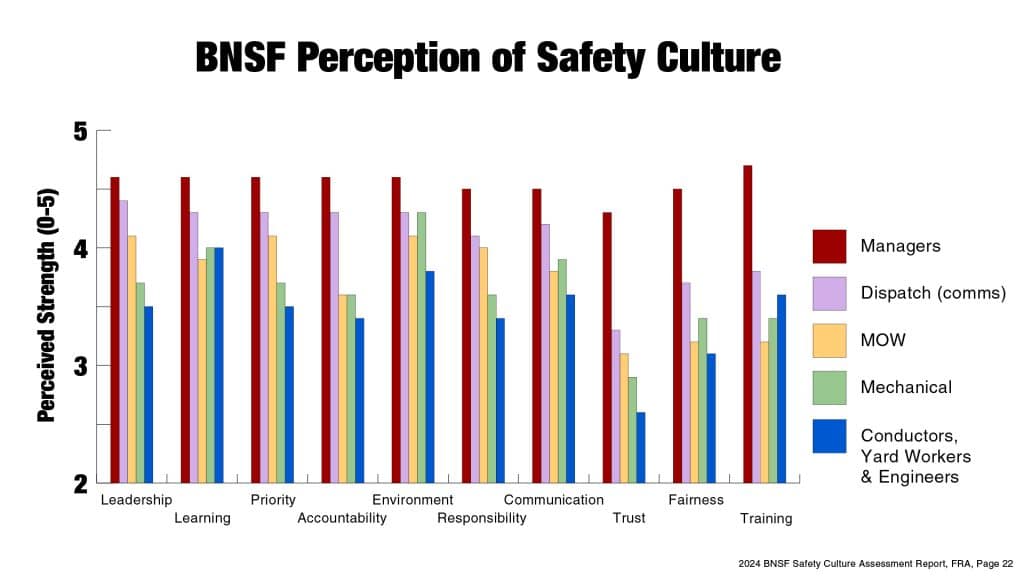Following the East Palestine derailment, the Federal Railroad Administration announced they were going to survey the safety culture of all Class I railroads. While one railroad interfered with these investigations, the FRA was able to complete their evaluation of the Burlington Northern and Santa Fe Railroad (BNSF).
Their results, published this week, are both interesting and predictable.
BNSF managers are ignorant of real safety concerns
As shown in this graph, BNSF’s managers had a consistently high opinion of how safe the workplace is that they oversee. The more closely an employee works with an actual train, however, the lower their estimation of how safely the organization runs. Here is the reality check:

BNSF has room to do more for our safety — a lot more
The FRA’s overall findings show that BNSF’s corporate policies may lean into the idea that safety is the company’s highest priority, but that message doesn’t translate into policies by the time it reaches craft employees. Specific areas of concern include:
- Clear reporting systems and accountability.
- Open and effective communication across the railroad.
- Mutual trust between employees and management.
- Fair and consistent responses to safety concerns.
- Training and resources are available to support safety.
A large part of FRA’s efforts to analyze the safety culture of the country’s largest railroads is based on the responses to interview questions given by employees. As part of the process, random railroaders from T&E, Maintenance of Way, Mechanical, Communications (dispatchers), and, of course, management are interviewed.
The FRA’s entire 150-page report is available to the public.
The employees operating the trains and the communities they pass through are not as safe as they could be, and railroad managers appear to be blind to this fact. Saying “safety first” on the BNSF website doesn’t result in safer trains. Earning trust, then investing in accountability, communication and training does.